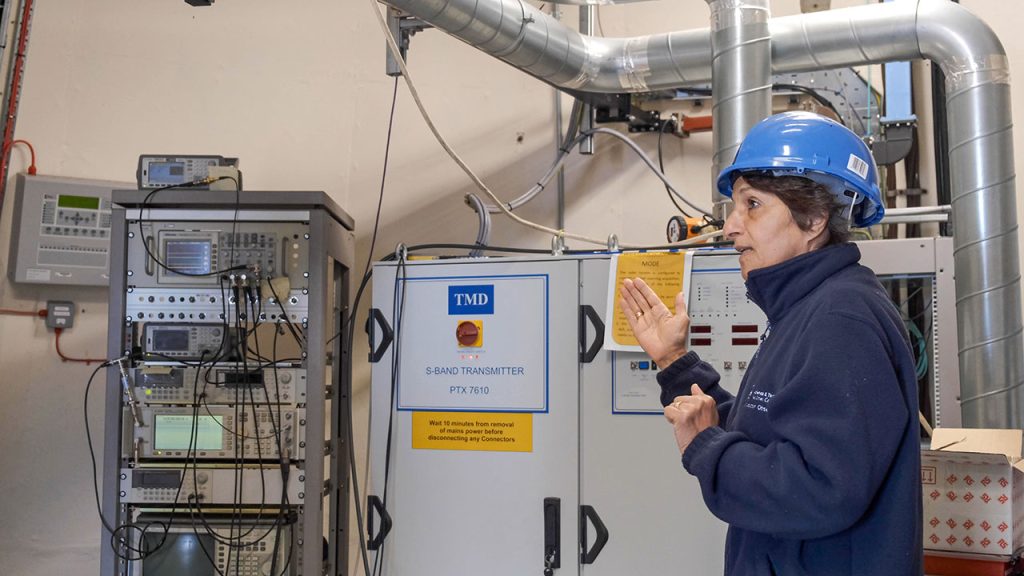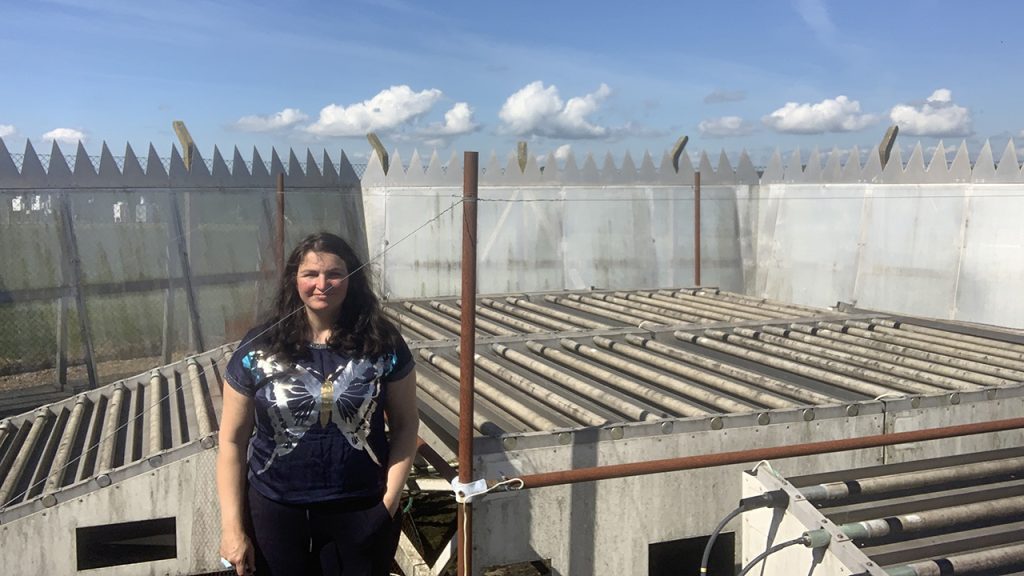
#BreakTheBias on International Women’s Day
Bias continues to hold women and science back, so this International Women’s Day we are sharing more stories from our Women in Science series.
Women have made important gains in representation in the last few years, but bias still makes it difficult for women to move ahead.
Recognising and amplifying the visibility, experience, and achievements of women is more important than ever.
We are sharing women’s stories from across the National Centre for Atmospheric Science to recognise their contributions, provide support to other women and girls in science, and to #BreakTheBias.
We spoke to Dr Emal Rumi, a Senior Research & Development Engineer who works at the Chilbolton Observatory, about life as a woman in STEM:
I’m an electronics engineer, and have always been very curious about the world around me. At age 9, I was opening up light sockets at home to see how they worked, and investigating our family’s portable radio to see how the speakers were wired up. My parents were actually very supportive of this, and I see my mother and father as my main role models in life. They encouraged me, my siblings, and all our friends to think and to ask lots of questions and pursue achievements in the things that we were most interested in. For 20 years I’ve dedicated myself to engineering, my interest in space, satellite communications, and atmospheric science – and I’m extremely proud of that.
But for years and years I’ve been sitting on my own – the only woman in the room. Subconsciously feeling like I need to work three times harder than everyone else. I consider myself as a woman in engineering and science. Working in science as a woman is changing, I see it happening everyday – and the engineering sector could learn a lot from science to improve equality.
It’s difficult to move walls, but we have already achieved a lot and still need to keep going – concentrating on what is achievable. Women’s dreams in STEM can come true, just follow your passion, and support each other to create well-deserved opportunities. Always nurture diversity because different brains lead to better ideas!
Judith Jeffery, an Instrument Scientist who has worked for over 20 years at the Chilbolton Atmospheric Observatory, talked to us as she looks back over her science career:
As a child, I was fascinated by science from an early age. One of my favourite science books early on was my Ladybird Book of the Weather – which I actually found the other day and looked over fondly! My mum, a lab technician, always encouraged me with my science homework too.
I am a physicist, and have worked as an instrument scientist for most of my career. I started out working in the field of atomic energy, and then with health protection agencies to understand the transmission of UV radiation and its effects on people. I guess that was the start of atmospheric science for me – studying the sun’s rays!
Following that, I began working out how weather can affect radio communications. This is where my fascination and special interest in lidar began – a remote sensing method that uses light in the form of a pulsed laser, to help generate detailed and precise maps of the atmosphere and the Earth.
Today, my main responsibilities are to develop, operate, and manage data from lidar and a wide range of meteorological instruments that measure temperature, wind, rainfall, sunlight, and aerosols.
My interests and skills have morphed over time, but what’s stayed as a constant is how much enjoyment I get from practical problem-solving science, setting up reliable methods, and acquiring data that is transferable and relevant to people. That’s what really matters to me.
Just because of the technology, my work has always been out on a bit of a limb. I’ve always worked very independently, which suits me, but it does mean I have to tackle some big learning curves by myself, and it’s a challenge to be so self-supported. I’ve often craved more interaction and teamwork, but it’s incredibly rewarding to see my hard work pay off.
Thinking back, I remember how difficult it had been to get a high power lidar system to work one time, but finally having a breakthrough and getting some really good data from cirrus clouds – hair-like clouds found at high altitudes. Atmospheric scientists find them interesting because they’re really effective at trapping the infrared thermal emissions from the earth’s surface. I got home after work, and sat out in the garden, and stared up at the sky feeling incredibly smug – I’d used a scientific instrument that day to closely observe the very clouds I was gazing up at in that moment.
We asked Dr Emily Grace Norton, an Instrument Scientist, to reflect on her role:
I think things are getting better for women in science, especially during the last decade. There are more opportunities for us to continue in science part time, and there are more women role models in research. Atmospheric science was dominated by men when I started out, and I found it quite daunting. I’ve come to realise that women often have different strengths to men in science, and we need to believe in ourselves more! But, it also needs to be recognised that part time workers can’t be expected to do a full time job.
As an instrument scientist, I feel like a small cog in the bigger scientific community wheel of scientific discovery. I am responsible for remote sensing observations of the winds during field experiments, and at NCAS’ observatory sites. My work underpins the latest weather, climate and air pollution research. That’s something I’m really proud of, and I enjoy talking to people about science and weather in my STEM ambassador role.
The last two years have been really tricky for everyone in so many ways, and I think working mothers were hit especially hard. Pre-pandemic, I travelled quite a lot to meetings and for field work. It was a really tricky schedule to juggle only working part time, but I really enjoyed it.
One advantage of the pandemic has been the advances in digital technology, which have helped me keep up with other scientists in my field and monitor the radar wind profilers without having to spend lots of time travelling. That said, I’m really looking forward to some face to face meetings and making some trips to the atmospheric observatories at Capel Dewi and Chilbolton. I’m planning to do some pandemic delayed maintenance work on the radar wind profiler and analyse recent storm data really soon.

You can join the conversation using #WomenInScience and #BreakTheBias on social media.
If you work with us, or are part of the environmental science community, we want to hear your women in science stories too. Share your experiences with us by completing our Women in Science Stories form or by emailing Ruth Purvis, our Head of Equality, Diversity & Inclusion.
